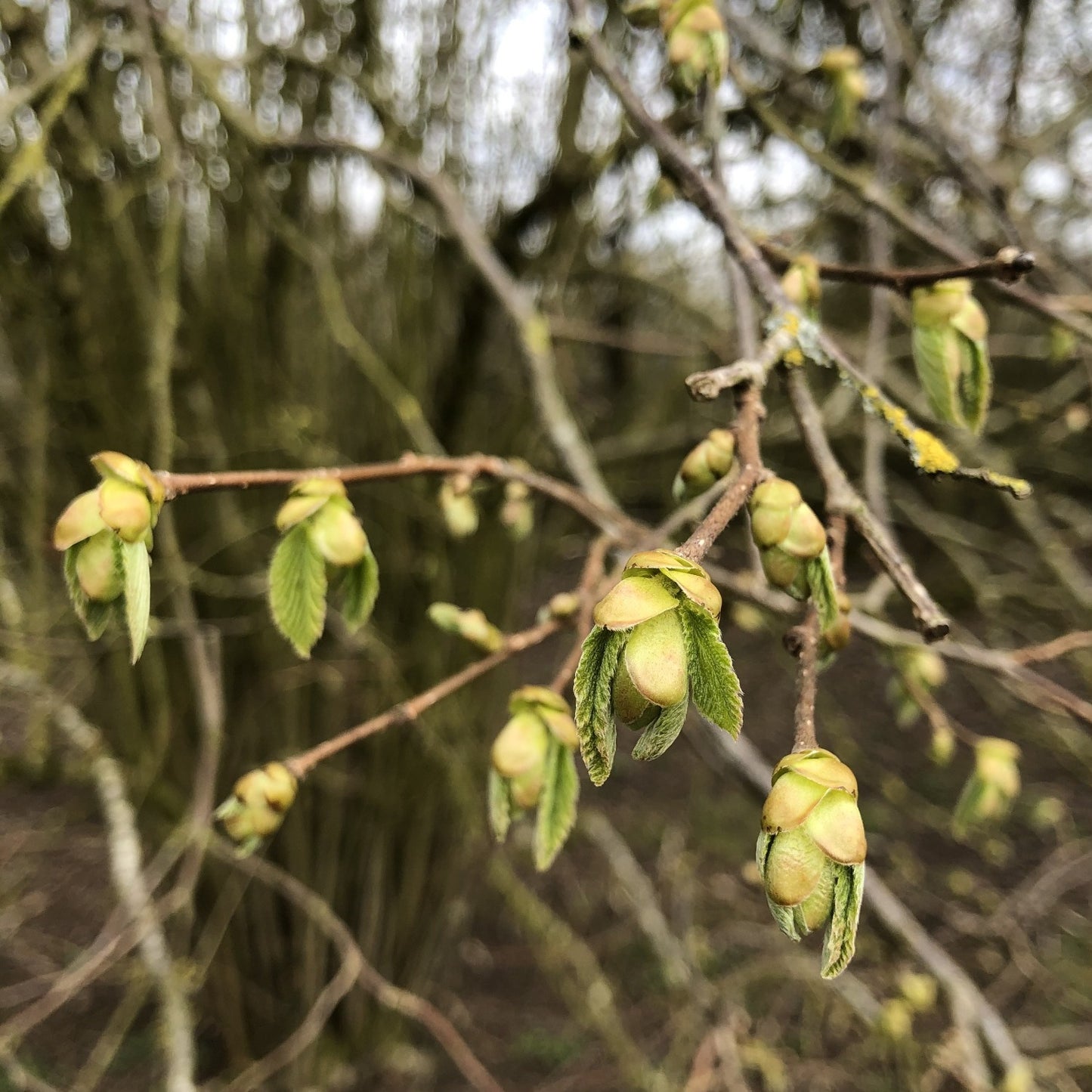Habitat Aid Ltd
Hazel (Corylus avellana)
Hazel (Corylus avellana)
Prices include VAT (when applicable) and delivery to mainland UK.
Couldn't load pickup availability
Hazel (Corylus avellana)
The hazel tree, Corylus avellana, has always been an important feature of our landscape. It was one of the earliest colonists after the last ice age, when there were some woods almost entirely comprised of Hazel.
The Romans grew it and for the Celts, whose druids carried hazel rods, it was the tree of knowledge. The botanical name comes from the Italian town of Avella, and it is in Italy where hazelnuts are still grown commercially in the biggest volume in Western Europe. Its range extends across the UK, however, and it grows in a wide range of soil types and conditions other than coarse acidic soils, including shade. It's often found here in the understory of broadleaf woodland, and was traditionally planted with oak . Hazel is short lived if left to its own devices, but managed coppice stools, often pegged down, can live for several hundred years.
Value For Wildlife
Hazel is a tremendous wildlife resource; the male yellow catkins ("Lamb's tails") are an invaluable source of early pollen for bees (despite it being wind pollinated), and its nuts, an iron age human staple, are a boon for insects and small mammals including dormice. The grey squirrel's liking for hazel nuts means that Hazel woods are sadly no longer self regenerative (if you fancy the nuts yourself, have a look at our Filberts and Cobs). Deer are also problematic - they love the new growth on coppice stools. Over 70 butterfly and moth caterpillars feed on hazel leaves, and coppiced plants provide cover for ground nesting birds. There are a large number of funghi associated with it too.
Uses
Hazel has been an important economic constituent of managed woodland since the Middle Ages, when hazel woods were prized assets, coppiced in a 6 - 10 year rotation. Planted as a short lived understory and regularly coppiced, hazel produces not only straight but incredibly pliable rods. In spring you can tie them into knots. From Neolithic times these were used for making wattle for hurdles, fencing, and wattle and daub walls, and hedge layers always find them helpful for making stakes and binders. Corylus avellana is widely used for all manner of traditional coppice products. It's not just valuable because of its rods and hazelnuts, but as a hedging plant because of its speed of growth, suckering habit, and tolerance of a wide range of conditions. We also include it in our trees for wood fuel collection. Oh, and dowsers use hazel twigs.
Hazel nuts are of course edible - and not just in Nutella. They're a good source of protein, potassium and calcium, and there are many recipes out there for biscuits etc.
Plants For Sale
Like all the native trees we sell, our Hazels are grown in the UK from British origin seed. We're currently selling 60-90cm plants in batches of 5 - perfect for hedging - as well as some larger plants.
Suppliers: RV Roger, British Hardwood Trees, Oakover Nurseries. All these growers are Plant Healthy certified nurseries.
See our planting and size guide for details and tips on planting. These hazel trees are all bare root, and are consequently available for delivery from November until March (please ask if you are interested in pot grown plants). During the lifting season there may be up to a month's delay between placing the order and dispatching, due to weather conditions or pressure of orders, which are dealt with in date sequence. Orders placed between March and September are confirmed in October ready for dispatch from November.
Have a look at our videos on what to do when your plants arrive and how to plant a bare root tree. Please ask about larger trees; we can often supply them but will need to quote on an individual basis as carriage varies so much.
Information
Share









